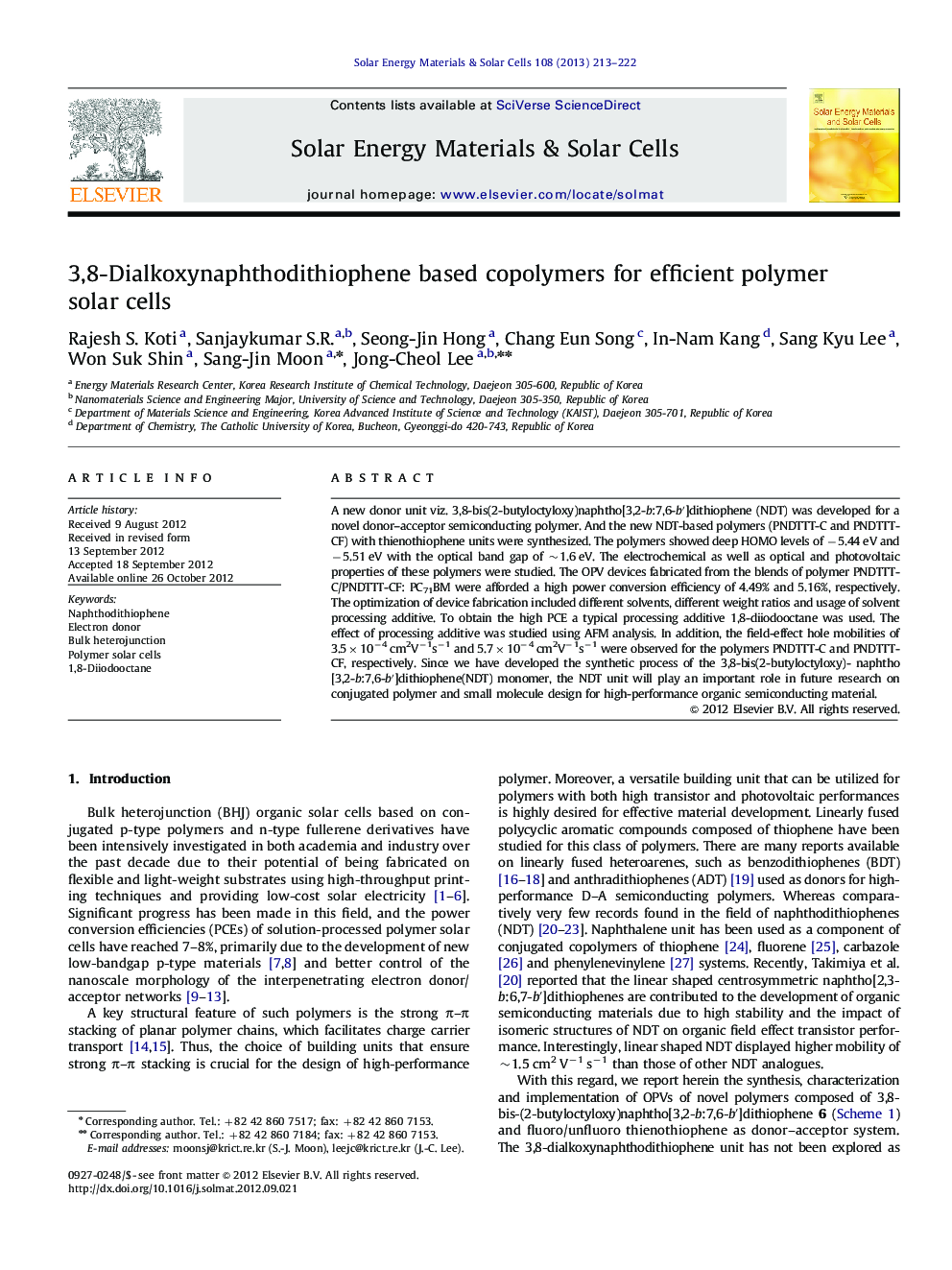| Article ID | Journal | Published Year | Pages | File Type |
|---|---|---|---|---|
| 78699 | Solar Energy Materials and Solar Cells | 2013 | 10 Pages |
A new donor unit viz. 3,8-bis(2-butyloctyloxy)naphtho[3,2-b:7,6-b′]dithiophene (NDT) was developed for a novel donor–acceptor semiconducting polymer. And the new NDT-based polymers (PNDTTT-C and PNDTTT-CF) with thienothiophene units were synthesized. The polymers showed deep HOMO levels of −5.44 eV and −5.51 eV with the optical band gap of ∼1.6 eV. The electrochemical as well as optical and photovoltaic properties of these polymers were studied. The OPV devices fabricated from the blends of polymer PNDTTT-C/PNDTTT-CF: PC71BM were afforded a high power conversion efficiency of 4.49% and 5.16%, respectively. The optimization of device fabrication included different solvents, different weight ratios and usage of solvent processing additive. To obtain the high PCE a typical processing additive 1,8-diiodooctane was used. The effect of processing additive was studied using AFM analysis. In addition, the field-effect hole mobilities of 3.5×10−4 cm2V−1s−1 and 5.7×10−4 cm2V−1s−1 were observed for the polymers PNDTTT-C and PNDTTT-CF, respectively. Since we have developed the synthetic process of the 3,8-bis(2-butyloctyloxy)- naphtho[3,2-b:7,6-b′]dithiophene(NDT) monomer, the NDT unit will play an important role in future research on conjugated polymer and small molecule design for high-performance organic semiconducting material.
► A novel 3,8-bis(2-alkoxy)naphtho[3,2-b:7,6-b′]dithiophene (NDT) core was developed. ► The new NDT-based polymers, PNDTTT-C and PNDTTT-CF, showed deep HOMO levels. ► The OPV devices of PNDTTT-C/PNDTTT-CF: PC71BM showed 4.49% and 5.16%, respectively.
